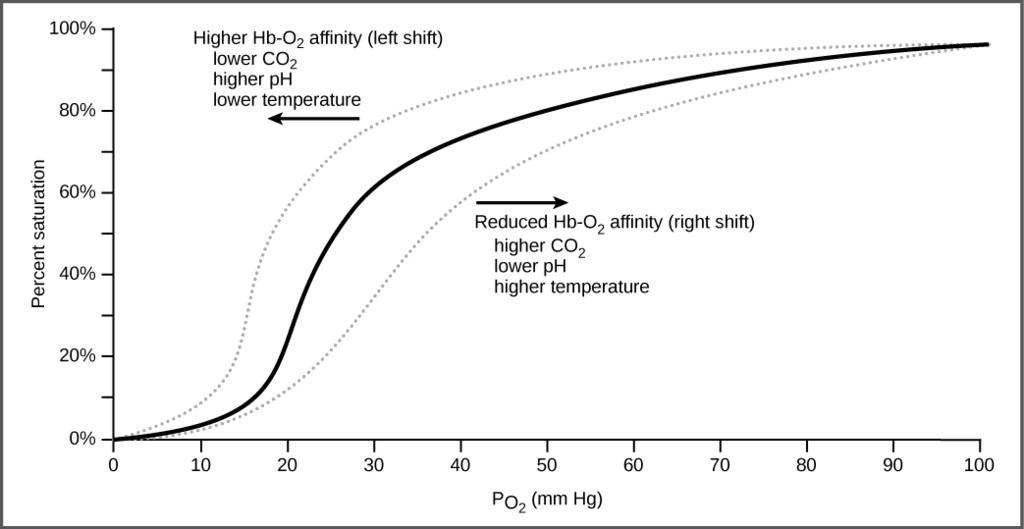Oxygen-haemoglobin dissociation curve
The shape of the oxygen-haemoglobin dissociation curve is a phenomenon resulting from the interaction of bound oxygen molecules with incoming molecules.
Hemoglobin is made up of four subunits and can bind up to four oxygen molecules.
The binding of the first molecule is difficult. However, this facilitates the binding of the second and third molecules, and it is only when the fourth molecule is to be bound that the difficulty increases, partly as a result of crowding of the haemoglobin molecule, partly as a natural tendency of oxygen to dissociate.

The oxygen dissociation curve demonstrates that as the partial pressure of oxygen increases, more oxygen binds hemoglobin
- however, the affinity of hemoglobin for oxygen may shift to the left or the right depending on environmental conditions
Related pages
Create an account to add page annotations
Add information to this page that would be handy to have on hand during a consultation, such as a web address or phone number. This information will always be displayed when you visit this page